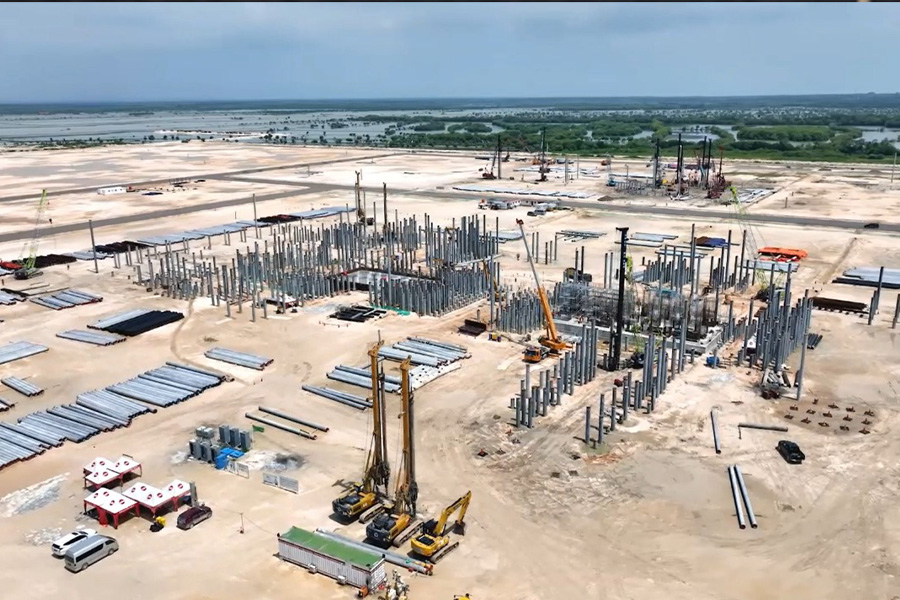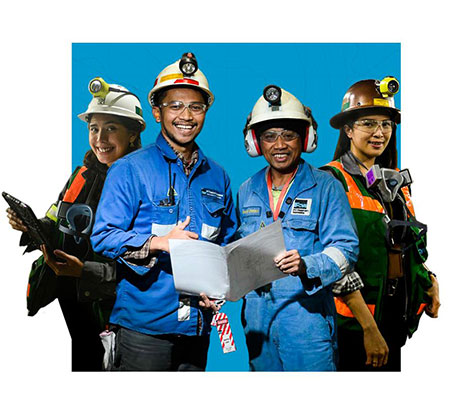18 July 2022

THIS is one of President Jokowi’s grand monuments: the Freeport downstream production project. It is materializing. Almost. I visited the project site last week. I wanted to confirm if that grand plan was truly coming together. The project would bring about production of 30 tons of pure gold. And 600,000 tons of copper. Of 99.9 percent grade.
200 tons of silver, as well. Along with many other products such as platinum and palladium. Nearly all chemical mineral products will be produced there. Except lithium. The project is located in Gresik, near Surabaya. To be exact in the JIIPE industrial park: Java Integrated Industrial Port Estate. Located on a shoreline. By the Kamal Strait. From JIIPE the western coast of Madura Island is clearly visible.
The JIIPE project covers an area of 3,000 hectares. It was formerly the site of traditional fishponds. There is an additional reclaimed area of 400 hectares. It is on this reclaimed land that the JIIPE port is built. The port has a 14-meter draft. Seagoing vessels of the Panamax class can be moored at this port. The first phase of port construction is completed and is even functioning. Materials for the project are being shipped to this new port.
This means, ahead, all concentrate from Freeport in Papua will be shipped to this location. No longer to Japan and Korea. The concentrate is to be processed at JIIPE. Gold will be produced, and copper, and silver, along with other mineral products. When exactly will all this take place in JIIPE Gresik? At the latest by mid-2024. Before the presidential elections are held. If the project is consistently accelerated, President Jokowi will still be able to officiate at the launching. President Jokowi has visited JIIPE three times since the project’s ground-breaking. The project’s progress is closely monitored.
For sure, President Jokowi will personally officiate at the launching. The project is indeed being rushed for completion. Piles are being driven into the ground. 22,000 pile points are needed for this project. Each point will hold not just one pile, but three or four. The demand is great for piles from Adhi Karya and Wijaya Karya, with piles reaching a depth of up to 45 meters. Not all of JIIPE will be occupied by Freeport. But the site for Freeport’s downstream products is truly expansive, covering an area of 1 km2, or 100 hectares.
Next year when project development peaks, around 14, 000 workers will be at work on the site. The gist of it is that Freeport downstream activity is no longer just a thought or an idea. It is being actually implemented. The decision to perform downstream production for all the mine products was in made in 2008. At the time, Freeport had ‘advanced’ farther than the nickel or bauxite sector. At the very least, Freeport was processing the ore it extracted into concentrate. Processing is conducted near Timika, with the concentrate produced destined for export through the port in Timika. Meanwhile, nickel and bauxite were still being exported in the form of ore. Only a small portion of these minerals were being processed by PT Antam. The nickel community was endeavoring to buy more time to enable it to export ore.
Initially the government was daunted, for fear of losing foreign exchange earnings, But now after facing a critical moment, nickel downstream activity has achieved great success, and is leaving Freeport behind. In the beginning Freeport had also attempted to buy more time to allow it to continue exporting concentrate, rationalizing it was already processing ore into concentrate.
In processing its ore into concentrate, Freeport only extracts around 30 percent. The remainder is left behind in Papua in the form of processing waste. Following Indonesia’s acquiring a majority stake in Freeport (51 percent), the decision to carry out downstream activity fell into the hands of the majority shareholder. Done! Thus was the decision for 100 percent downstream activity reached. To be conducted domestically. In Gresik, At JIIPE. The JIIPE industrial park is owned by a consortium of two: PT AKR Group (60 percent) and state-owned Pelindo (40 percent). But the reverse applies over ownership of the port area. Pelindo owns 60 percent, and AKR, 40 percent. Now, numerous industries are moving into JIIPE. Sari Roti has a plant on site. I only recently discovered that Sari Roti is in fact Japanese-owned in partnership with Salim Group.
Bank Indonesia is also building there, on a 17-hectares plot. Djarum Group is present there as well, perhaps as it looks to rapid development of its electronics industry ahead. “With raw materials such as gold, copper, and silver close at hand, plants needing these materials will be better positioned here,” JIIPE Operations Director Naresh Anchalia, commented. Many derivative products are to be had from the downstream activity. (*)
Kami menghimbau para pencari kerja untuk berhati-hati dan mewaspadai beragam modus penipuan perekrutan yang mengatasnamakan PT Freeport Indonesia. Dalam setiap proses rekrutmen dan penerimaan karyawan, PT Freeport Indonesia maupun konsultan rekruitmennya tidak memungut biaya apapun.
Untuk melihat lowongan, silakan akses melalui link berikut: ptfi e-recruitment
Untuk melihat informasi magang, silakan akses melalui link berikut: Internship Program
